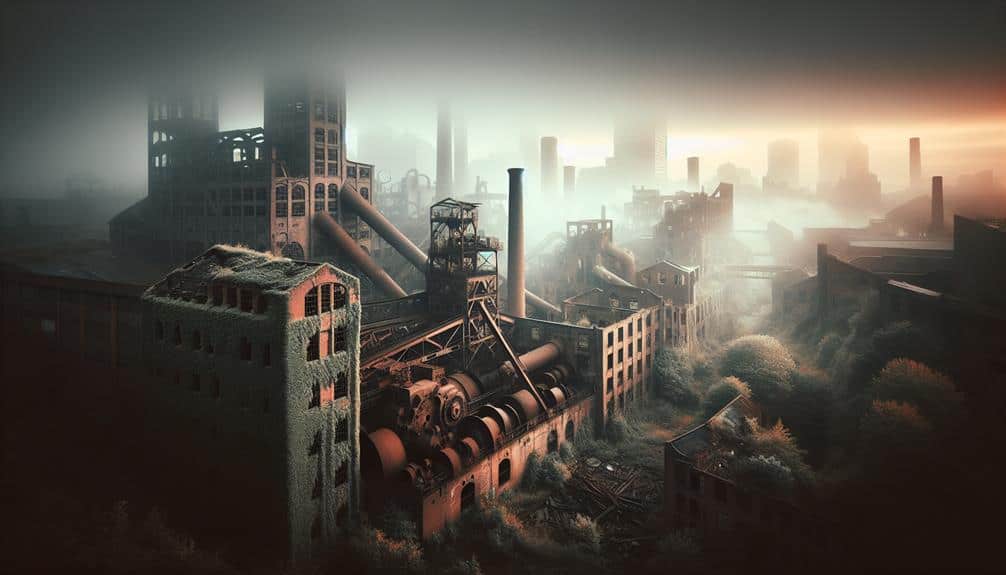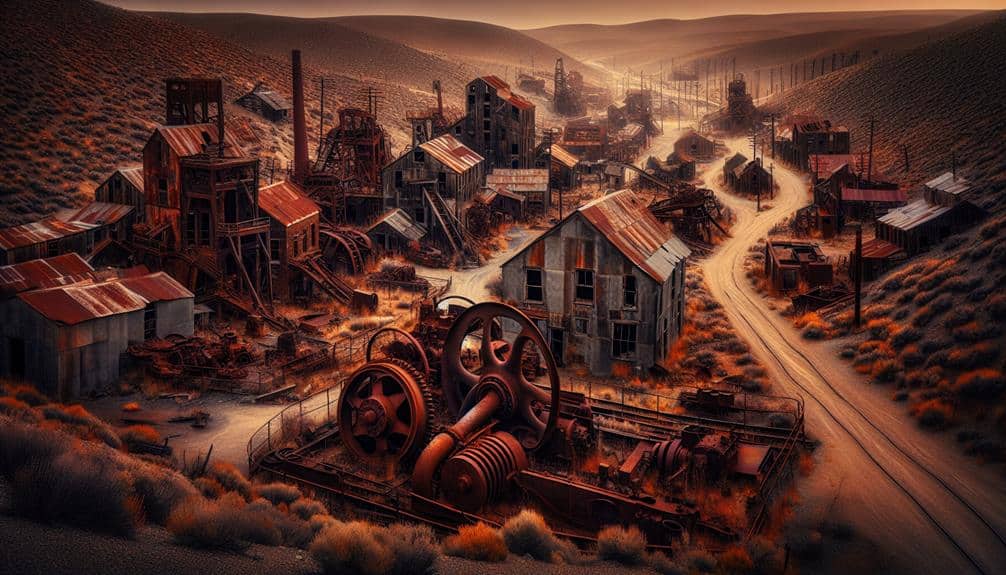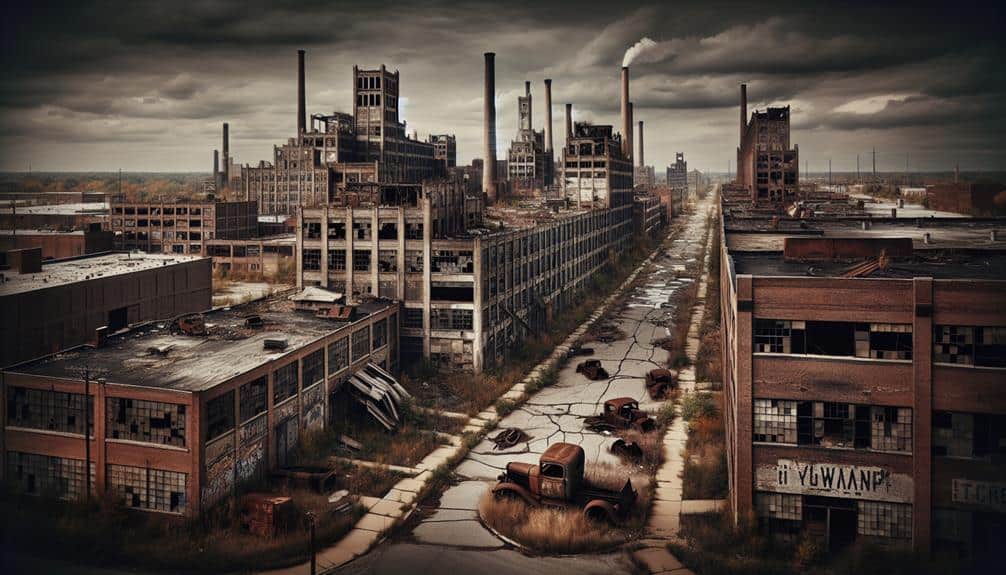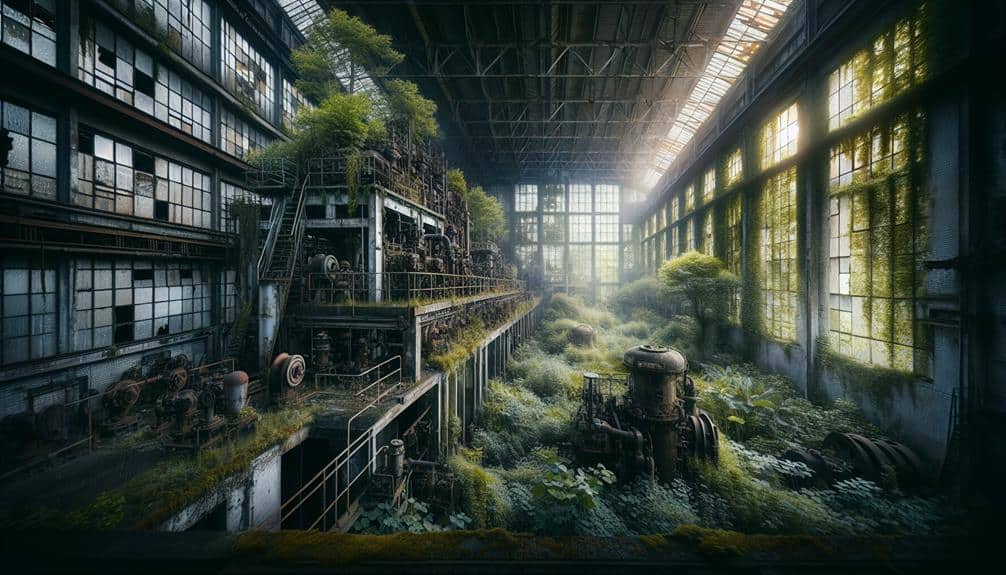Exploring the history of abandoned foundry towns illuminates a tale of industrial growth, economic challenges, and shifting social dynamics amid the Industrial Revolution. These towns arose in response to the escalating demand for metal products, attracting a surge in population and innovation. Over time, economic fluctuations and technological advances reshaped these communities, leading to both prosperity and abandonment. Preservation efforts now aim to conserve these unique heritage sites and revitalize their structures for future generations. Uncover the intricate layers of history, progress, and renewal that characterize these forgotten landscapes.
Key Points
- Industrial Revolution spurred rapid growth of foundry towns.
- Economic boom followed by decline due to overproduction and market fluctuations.
- Technological advances revolutionized foundry industry, leading to job displacement.
- Social dynamics shifted as populations dwindled, impacting community cohesion.
- Preservation efforts aim to revitalize abandoned towns for cultural and economic sustainability.
Rise of Industrial Foundry Towns
During the Industrial Revolution, industrial foundry towns emerged as key centers of metal production and urban development. These towns were characterized by rapid industrialization, with factories and foundries springing up to meet the growing demand for metal goods. As urban development accelerated, workers flocked to these towns in search of employment opportunities, leading to a significant increase in population density.
However, this rapid growth came with its own set of challenges, particularly regarding environmental consequences. The unchecked expansion of industrial activities in these foundry towns resulted in widespread pollution and environmental degradation. The air became thick with smoke and pollutants, impacting the health and well-being of both the workers and residents in the surrounding areas.
Despite the economic benefits brought about by the industrial revolution, the environmental toll of industrial foundry towns serves as a stark reminder of the need for sustainable development and responsible industrial practices. It's essential to learn from the past and aim for a balance between urban development and environmental preservation to create a more sustainable future.
Economic Boom and Decline
The Economic Boom and Decline of industrial foundry towns marked a tumultuous period characterized by rapid growth followed by significant challenges and eventual decline. Initially, these towns experienced a remarkable rise as the demand for iron and steel products surged during the manufacturing evolution of the late 19th and early 20th centuries. This led to the establishment of numerous foundries, attracting a large workforce and fostering bustling communities.
However, with success came challenges. The rapid industrialization led to overproduction, intense competition, and fluctuating market demands. As a result, many foundry towns faced economic downturns, causing layoffs, reduced wages, and in some cases, closures of the once prosperous factories. The rise and fall of these towns were closely tied to the economic cycles of the manufacturing industry, highlighting the vulnerability of single-industry communities.
The decline of these foundry towns serves as a reminder of the importance of economic diversification and adaptability in sustaining local economies, a lesson that continues to resonate in modern times.
Impact of Technological Advances
How have technological advances reshaped the landscape of industrial foundry towns, influencing their trajectory from prosperity to decline? Technological innovations played a significant role in the rise and fall of these towns. The introduction of advanced machinery and automation revolutionized the foundry industry, increasing efficiency and production capacity. While these innovations initially brought prosperity by meeting growing demands, they also led to workforce displacement as machines replaced manual labor.
As technological advancements continued, the need for a large labor force decreased, causing many workers to lose their jobs. This displacement of the workforce had a domino effect on the towns, leading to economic instability and a decline in population. As more people left in search of employment opportunities elsewhere, the once-thriving foundry towns became abandoned shadows of their former selves.
The impact of technological advances on these towns serves as a stark reminder of the delicate balance between progress and preservation. While innovation can drive economic growth, it must be accompanied by strategies to mitigate the negative effects of workforce displacement to guarantee the sustainability of communities.
Social Dynamics in Abandoned Towns
The technological shifts in industrial foundry towns not only reshaped their economic landscape but also deeply influenced the social dynamics within these now-abandoned communities. As industries declined, the population dynamics of these towns underwent significant changes. Many residents left in search of new job opportunities, leading to a decline in population and a shift in the community's demographics. This exodus often strained community relationships as longstanding bonds were broken, and social networks dissolved.
The dwindling population also impacted the overall sense of community within these towns. Once vibrant neighborhoods became deserted, and the remaining residents struggled to maintain a sense of cohesion. With fewer people to rely on, social support systems weakened, and the fabric of these communities began to unravel. The loss of shared experiences and collective memories further eroded the sense of belonging that once characterized these towns, leaving behind a palpable emptiness that still lingers in their abandoned streets.
Preservation Efforts and Future Prospects
With a growing awareness of historical significance, preservationists and local authorities are actively exploring innovative strategies to revitalize abandoned foundry towns for future sustainability and cultural preservation. Preservation initiatives play an essential role in safeguarding the unique heritage of these towns, focusing on restoring historical buildings, creating heritage trails, and implementing educational programs to engage the community in the preservation process.
Revitalization projects aim to breathe new life into these forgotten towns by repurposing old foundry buildings into art galleries, museums, or community centers. By blending historical preservation with modern functionality, these projects seek to attract tourists, artists, and entrepreneurs to stimulate economic growth and create a sense of place.
The future prospects of abandoned foundry towns depend on the success of these preservation and revitalization efforts. Through collaborative partnerships between preservationists, local authorities, and the community, these towns have the potential to transform into vibrant cultural hubs that celebrate their industrial past while embracing a sustainable future.
Frequently Asked Questions
What Are Some Common Myths or Urban Legends Associated With Abandoned Foundry Towns?
You might hear stories of mythical creatures lurking in abandoned foundry towns, tales of paranormal activity in the night. People whisper about lost treasures hidden in the ruins, haunted buildings echoing with the past.
How Do Environmental Factors Play a Role in the Deterioration of Abandoned Foundry Towns?
Environmental degradation in abandoned foundry towns results from factors like pollution, natural decay, and neglect. This deterioration not only impacts the ecosystem but also affects the societal well-being, contributing to economic struggles and health issues.
Are There Any Notable Historical Figures or Events That Are Often Overlooked in the History of These Towns?
Often overlooked in the history of these towns are the figures who fought for workers' rights and the events that sparked change. Remember the forgotten heroes and pivotal moments that shaped these communities.
What Role Did Immigration and Cultural Diversity Play in Shaping the Social Dynamics of Abandoned Foundry Towns?
Immigration impact on abandoned foundry towns was immense, fueling growth and diversity. Cultural diversity dynamics shaped social interactions, fostering a unique blend of traditions. As newcomers settled, they infused new life into these once-thriving communities.
How Have Art and Literature Been Inspired by the Haunting Beauty of Abandoned Foundry Towns?
Exploring creativity in abandoned towns, haunting landscapes inspire artistic inspiration. The eerie beauty of forgotten places sparks imagination. Artists and writers are drawn to the melancholic charm, weaving tales that echo the whispers of the past.



